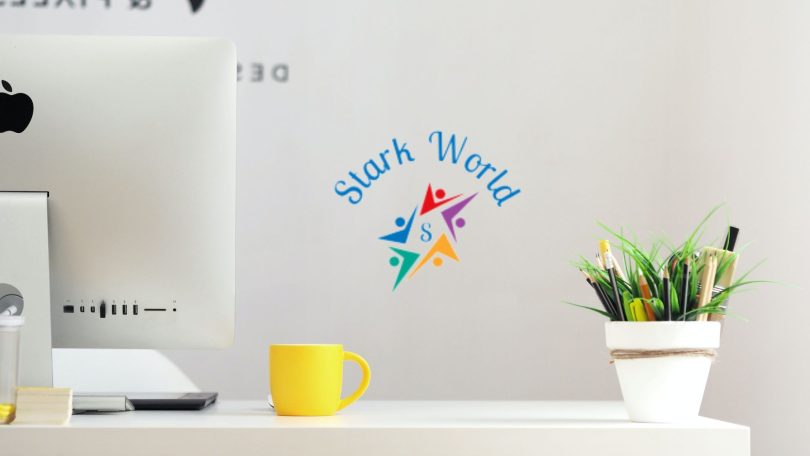Picture entering your home and experiencing a profound sense of calm and peace enveloping you. The room is neat, everything is in its place, and there’s no clutter to cause chaos in your mind. This isn’t just a dream but a reality that can be achieved with a few easy steps—steps that not only organize your home but also pave the way for a stress-free environment. Let’s delve deeper into the benefits of such an arrangement and how to make it happen.
The importance of an organized home for reducing stress
Home should be our sanctuary, a haven where we unwind and relax. However, a disorganized home filled with clutter can often lead to increased stress levels. According to a study by the Personality and Social Psychology Bulletin, women who described their homes as cluttered showed higher levels of the stress hormone cortisol.1 By organizing our homes, we can create a more harmonious space that promotes relaxation and reduces stress.
Benefits of a stress-free environment
A stress-free environment reaps numerous benefits. It enhances our ability to focus, improving productivity and creativity. It also contributes to better mental health by reducing anxiety and depression. A study conducted by the Journal of Neuroscience revealed that clean spaces help reduce distractions and improve cognitive function.2 Moreover, a tidy environment encourages better sleep and overall well-being.
Step 1: Decluttering
Assessing and sorting belongings
Embarking on the journey to an organized home begins with decluttering. Initiate the process by evaluating your belongings. Group similar items together, such as clothes, books, kitchen utensils, etc. This categorization helps in determining what you have and what you might not need.
Creating designated spaces for items
Once you’ve sorted your belongings, the next step is to designate a specific space for each category. This system makes it easier to find items when needed and prevents clutter from accumulating. For instance, keep all your books on a particular shelf or store kitchen utensils in a specific drawer.
Getting rid of unnecessary items
It’s easy to hold onto things we don’t need, hoping they might be useful someday. However, these unnecessary items only contribute to clutter. After sorting, determine what items are surplus to your needs. Donate, sell, or recycle these items to make room for what truly matters.
Step 2: Creating a System
Establishing a daily routine
Developing a daily routine can significantly increase the efficiency of maintaining an organized home. Designate specific times for tasks such as cleaning, laundry, or tidying up. By incorporating these tasks into your daily routine, you’re less likely to let clutter accumulate.
Implementing storage solutions
Storage solutions are key to keeping your home organized. From shelves, boxes, and baskets to closet organizers, there are numerous options available. Choose solutions that best fit your space and needs. Remember, the goal is to create a functional system where every item has its place.
Organizing paperwork and digital files
In today’s digital age, organizing isn’t just about physical items. Digital clutter can also contribute to stress. Regularly sort through emails, digital files, and social media notifications. Consider using digital tools and apps to manage your paperwork and files efficiently.
Step 3: Cleaning and Maintaining
Establishing a cleaning schedule
Regular cleaning is essential for maintaining an organized home. This could be daily, weekly, or monthly, depending on your lifestyle and needs. A consistent schedule ensures your home stays clean and tidy.
Properly storing and maintaining items
Proper storage and maintenance of items are vital in preserving their lifespan. Make sure items are stored safely to prevent damage. Regularly inspect your belongings to ensure they’re in good condition. Replace or repair any items as necessary.
Regularly decluttering and reorganizing
Organization isn’t a one-time event; it’s a continuous process. Regularly reassess your belongings and spaces. Adjust your organization system as needed. This regular upkeep helps maintain an organized home and promotes a stress-free environment.
Step 4: Personalizing and Minimizing
Adding personal touches to the space
While it’s crucial to keep your space organized, it’s equally important to make it feel like your own. Incorporate personal touches that mirror your unique style and personality. This could be through artwork, photographs, or even the color scheme of your home. These personal touches add warmth and character to your space.
Simplifying and minimizing possessions
Simplifying your life doesn’t mean getting rid of everything you own. It means owning only items that add value to your life. By minimizing possessions, you can focus more on experiences and relationships, which often bring greater joy and fulfillment.
Incorporating relaxation and mindfulness practices
Creating a stress-free environment goes beyond just organizing your physical space. Incorporate practices like meditation, yoga, or deep-breathing exercises into your daily routine. These practices can help reduce stress and promote a sense of calm and balance in your life.
Conclusion
To sum up, organizing your home for a stress-free environment involves decluttering, creating a system, cleaning, maintaining, personalizing, and minimizing. It’s not just about having a clean house; it’s about creating a space that uplifts your mood, enhances your productivity, and ultimately improves your quality of life. Remember, it’s a continuous journey rather than a one-time event. So, start with small steps and gradually build up to create the peaceful, organized home you’ve always dreamed of.







